








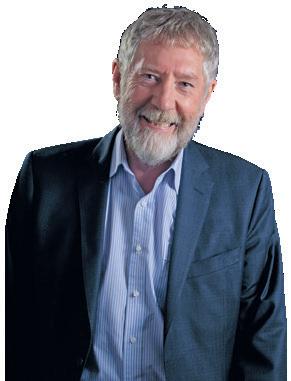





























A PIECE of motoring history with links to Australia’s political past is up for auction in Canberra.
A luxury car once owned by former Prime Minister and Treasurer Paul Keating, which has been in the hands of his former driver’s family for the past 26 years, is going under the hammer.
The perfectly maintained 1972 Mer cedes-Benz with 87,897 miles (141,456 kilometres) on the clock was the Keat ing family car during the ‘80s and ‘90s. It’s expected to go for around $80,000.
When he left Canberra, Keating gifted the car to his driver – the late Jimmy Warner, of Queanbeyan – in return for his years of loyal service and friendship.
Jimmy passed away six years ago and the car was acquired by his nephew Simon Warner who has recently made the difficult decision to part with it.
“It’s a silver blue 1972 MercedesBenz 300SEL S class and was top of the range in its day,” said Warner, 56.


“It’s got leather seats, power steer ing, power windows, power locks, woodgrain dash and airbags.
“It’s a really comfortable ride, like a lounge on wheels, but it’s time to let it go and let someone else enjoy it.”
Warner said the car – kept in his Queanbeyan garage until now – comes attached with a great deal of memories of the former Prime Minister and his driver.
Warner’s uncle Jimmy served as Keating’s ministerial driver for 13 years from his time as Treasurer in 1983 until he ceased to be Prime Minister in 1996.
Their relationship got off to a less than ideal start when Warner – a Com monwealth car driver since the late ‘60s – first picked up the new Treas urer to take him home.
“The Labor Party had just got in – it
was March 1983 – and I think Keating was living in Red Hill at the time,” said Warner.
“They were driving along and Mr Keating was giving Jimmy direc tions… ‘left here, right here’ he kept saying until Jimmy chimed in; ‘look here’ he said ‘you worry about the economy and I’ll look after the driv ing, son’.”
From that moment on Keating formed a firm friendship with the down-to-earth Queanbeyan local.
Warner said his uncle played a pivotal role in Keating acquiring the
Since 1993: Volume 28, Number: 41
Managing director: Kate Meikle, kate@citynews.com.au Sales director: Tracey Avery, 0477 939999




Senior advertising account executive: David Cusack, 0435 380656

Advertising account executives: Damien Klemke, 0439 139001
Tim Spare, 0423 381691
Editor: Ian Meikle, editor@citynews.com.au
Journalists: Belinda Strahorn, belinda@citynews.com.au; Nick Overall, nick@citynews.com.au; Lily Pass, lily@citynews.com.au
Arts editor: Helen Musa, helen@citynews.com.au
Production manager: Janet Ewen
Designer: Mona Ismail
reader: Glenda Anderson
manager: penny@citynews.com.au
highly coveted Mercedes for his per sonal use as the family car.
“Jimmy and him were in Melbourne on business driving their Common wealth car and the Mercedes flew past them,” said Warner.
“Mr Keating said to Jimmy ‘chase that car I want to have a look at it’ and so he did.
“They pulled the driver of the car over – he was a doctor – and they got talking and did the deal then and there.”
Warner went on to become more than Keating’s driver, he was wel comed into the family as a trusted
confidant, and special friend.
Warner said that his uncle and Keating had got into a bit of mischief during the years he drove for the for mer Prime Minister.
On one occasion the pair swapped jobs with Keating acting as chauffeur.
“There was a function at Parliament House and Jimmy had a few too many drinks,” said Warner.
“No-one could find Jimmy when it was time to go home. When they even tually found him he was in no condi tion to drive so Keating drove the car back to The Lodge with Jimmy in the passenger seat.”
When Keating lost the Prime Min istership in 1996, he left Canberra parting company with the beloved Mercedes and his dear friend.
“They kept in contact, and when Keating found out that Jimmy was sick some years later, he drove straight up from Sydney to the cancer ward at Woden Hospital to say goodbye,” said Warner.
After Warner’s death Keating deliv ered the eulogy at his funeral.
Warner hopes the car ends up in a good home with someone who appreci ates Labor history.
“I hope it goes to someone who will look after it and who appreciates Aus tralian political history,” he said.

The car is up for auction until 7pm, October 12 at Allbids.

catch up. I feel sorry for these workers and, provided the potholes aren’t the result of cheap road laying, I also sympathise with the government struggling with the problem.
Not so my irascible Stirling snout, who shouts: “We’re governed by idiots – mainly lawyers who have never had to roll up their sleeves and get their hands dirty.”
Val Dempsey… “Not bad going for a girl from Frome Street, Narrabundah’’.
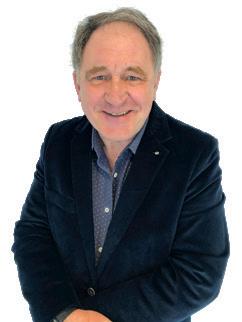
The mother-of-all-potholes at Cooleman Court bus stop.

The pothole “CityNews” has adopted… all ready for repair, maybe.
with the promise that [husband] “Lindsay would probably vote for you next time!”. Oh, and Frome Street? That’s not what it used to be, either – the last sale there in August went for $1.35 million.

IF the city hasn’t entirely gone to pot, then it’s certainly gone to potholes. They’re eve rywhere, from small fractures on suburban streets to dangerous, deep gashes on busy highways. There seems to be more and more every time the rain comes sheeting down.
I ride a motor scooter from time to time and have managed to dodge falling into any of them, but often only by a whisker. They loom suddenly up from the tarmac like evil characters in a video game.
His frustration is not about the contem porary potholes, but the heritage motherof-all-potholes at the Cooleman Court shopping centre bus stop.
“It’s been there for donkeys’ ages, more than a year, and seems to be growing. Every now and then someone patches it up – but to no avail.”
Then our senior sales consultant David Cusack snapped a rain-filled pothole near Belconnen. This one had white paint around its extremes suggesting it was singled out for repair. We’ve adopted it as an office mascot and will watch to see how long it takes to get fixed.
for one item of colour; Val took a scarf. They give you pyjamas to wear on the plane and Mr Albanese came by to see if they were all okay.
They had to be seated at the abbey (behind 10 “ordinary” Canadians) at 8.30 ahead of the 11am funeral. When the Queen’s coffin passed by, Val crumpled into
guard carrying halberds (pikes).
She quickly sidestepped into a pew to let them pass, nipped back into the aisle and, from under her wide-brimmed black hat, bam! She’d walked straight into the chest of a man in a suit.
Brim lifted, looking up and without miss
as the plane flew low over Giza, someone woke the pyjamaed Val to see pyramids. She was awestruck and excited and dashed up the plane, past the travelling journos and, knock-knock, into a room where Albo was holding a meeting.

She effusively thanked the PM and left
Riding in the dark would be foolhardy until the poor sods employed to fix this problem
The last pothole story comes from a Kingston snout who’s wrecked two expensive tyres and rims on potholes. He got in touch with Canberra Connect to bemoan the $900 bill and sound them out about compensa tion. Did he take a photo? No. Sorry, have a nice day.






REBECCA Vassarotti, the ACT Sustainable Building and Construction Minister, announced in late August that state and territory ministers had agreed to a national mandatory seven-star rating for new residential buildings, starting next October.

Moves to have homes capable of dealing with climate change have to be celebrated.
A national coalition of more than 100 groups had combined efforts to put the case to lift the minimum star rating from six to seven. They had been doing the advocacy to get the state and territory ministers to agree. And they did – eventually.
Another factor is the work of the Australian Building Codes Board (ABCB). This federal and state initia tive is the standards-writing body for the National Construction Code, WaterMark and CodeMark Australia Certification Schemes.
To quote from the ABCB: “These reforms will ensure our buildings are helping us reach a low-emissions future. These changes are the result of over three years of development and consultation by the ABCB, and deliver a key policy priority of ministers.”
When the search was undertaken
ments were to happen with the change to seven-star, things were a little less clear.

One amusing answer was this wonderful statement: “The seven-star rating will be better than the six-star rating introduced in 2010”. Good to know. You have to wonder why it took more than 10 years to move the codes up one point – 10-star being the desired rating.
Several years ago, a lot was made by ACT ministers in high-viz vests that new Canberra suburbs were to be built to the six-star rating.
Industry experts have stated since that the rating was more about how the homes were modelled – not as they were built. Many factors worked against achieving the claimed six-star


by residents as being well below the proposed energy efficiencies.
The lack of enforcement is well known and there has been no substan tial government evaluation of the benefits. There remains scepticism about how the seven-star rating will be enforced, what will be mandatory and whether this one jump in rating is another small step to avoid making real decisions about addressing urban climate change.

However, if the ACT minister was to ensure through effective enforcement that every new house was built and operated to seven-star rating, then the benefits could be delivered. The cuts to thermal energy could be as high as 27 per cent and there could be tangible health, comfort and other benefits.
And the elephant in the room? The Greenslabor government has con trolled the planning and development agenda for more than a decade yet most new houses are now regarded as being at best two or three-star tents when it comes to how they perform. There has been nothing stated by Minister Vas sarotti or her Greenslabor colleagues on how they plan to assist with retrofit ting the suburbs they have approved while knowing that these homes are mostly not fit for purpose in effectively dealing with climate change.
The next question is whether Minis ter Vassarotti was serious about deal ing with urban climate issues when she said in her August media release, to quote: “Raising it to a minimum
seven-star rating is not a particularly ambitious change – research shows that at seven stars, we’ll still be behind the codes of other comparable climates and jurisdictions.”
Maybe that was an announcement by the ACT Minister for Sustainable Building and Construction, the Envi ronment and Housing Services that she will insist that her ACT Greenslabor government lift the minimum standard for housing construction well above the minimum seven-star rating –sooner rather than much later.
Minister Vassarotti has placed herself in the frame to deliver on overdue improved standards in hous ing in Canberra. We look forward to assessing the realities of her achieve ments. Will she do the right thing for future generations and set a target date in the next couple of years for the 10-star rating to be enforced?
One hopes she realises that the planet will not wait for more of this government’s delays and obfuscation in addressing the real-world, urban-housing climate priorities.
There has been nothing from Vassarotti or her colleagues on how they plan to retrofit suburbs they’ve approved while knowing these homes are mostly not fit for purpose in effectively dealing with climate change.
THE newly appointed president of the ACT Bar Association wants to encourage more women to pursue a career at the bar.
The first female president in the bar associa tion’s 58-year history, Rebecca Curran, points to the parity of the men and women graduating with law degrees, yet the number of females practising at the bar still trails well behind their male counterparts.
“Women are largely under-represented as barristers… statistically, for many years it was less than 10 per cent,” said Curran, 53.
“There are certainly more women qualifying as solicitors but the statistics show there are not more qualifying as barristers.”
Of the 93 barristers in the ACT, 22 were fe male, of which 14 were at the private bar, and eight held a government practising certificate, Curran said.
“It’s less than 25 per cent – which is actually very good – and isn’t that a terrible thing to say in 2022 especially when you look back at the law schools and the rate of graduation is 50/50 or even a little bit in favour of women,” said Curran.
A barrister of 10 years, Curran attributed the gender imbalance in bar representation to a number of key factors including the loss of many senior female barristers to judicial ap pointments.
The mother-of-four argued that while the pri vate bar is a “wonderful” career opportunity you are largely self-employed and, as such, the profession did not have the full range of mater nity leave arrangements available elsewhere.
“I speak to a number of young women and say, ‘come to the bar, it’s fabulous’. But for young women, the security of employment, sick leave and taking paid parental leave when you need it is a very real impediment,” she said.
She said she was not prepared to settle for such a low female representation at the bar, and wanted to continue the work the association was doing to improve representation.
“In our strategic plan there are three things we are trying to achieve; first is excellence in our advocacy, second is having a voice with the media, court and government, and third is to deal with the issues of the lack of diversity and gender balance,” she said.
Curran was also seeking to broaden the representation of people practising at the bar to include greater numbers from culturally diverse backgrounds.
“There is an under-representation of people from cultural backgrounds and that reflects on the kinds of people who have the capacity, the financial backing, confidence and experience to become a barrister,” she said.
“We want to make it more accessible as a real career option so that young lawyers see them selves at the bar.”
Growing up in northern NSW in a farming family with no legal connection, Curran was encouraged to pursue a career in law while at school in Armidale.
“I had a wonderful teacher called Brother Fred Sheridan who said, ‘what do you want to do?’ and I said maybe I should be a teacher and he said, ‘why don’t you apply for law?’,” she said.
“So I did. I got into law at the ANU and I loved it.”
Curran was inspired by the encouragement she received while at school, later from judges she worked for as an associate, and then as a registrar in the family court in Brisbane.

“At the Family Court I was working with a couple of wonderful judges Michael Kent and Pe ter Murphy – who are now retired – and they both encouraged me to do the bar exams,” she said.
“I had just had my fourth child and was un sure if the time was right and Michael said, ‘the time is never right, just do it’.”
Before joining the bar in 2012, Curran was in private practice in Canberra and Brisbane, and was a deputy registrar of the Family Court of Australia.
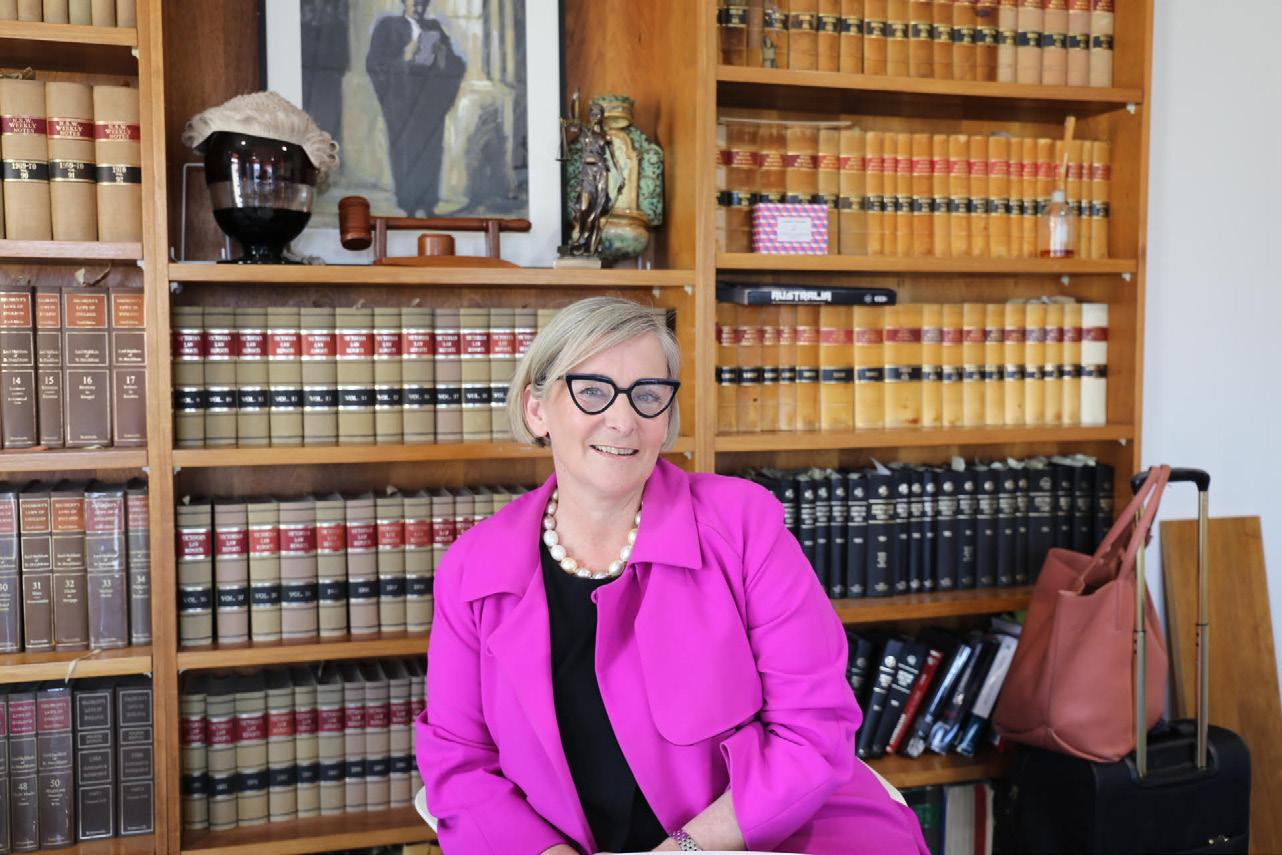

Like most working mums, she had to juggle her legal career while raising a family – in her case, made all the more difficult by the tragic loss of her husband John seven years ago.
“I wouldn’t have gotten through that time without such a wonderful and supportive group,” she said.
CANBERRA local Jeff Smart was diagnosed with Parkinson’s when he was 51 but says looking back, he was experiencing symptoms years before.
“Many people think it’s an older person’s disease, but one in five people with Parkinson’s are of working age,”
“Parkinson’s is not a death sentence. The fact that I have it doesn’t mean I can’t do things. I still work part time and am an active member of our community.”
On Sunday, October 23, Canberrans are being encouraged to “Walk To Fight Parkinson’s”, to rally and raise money for people living with Parkinson’s and other neurological disorders.
In the ACT more than 2000 people live with Parkinson’s, a neurodegenerative condition with complex motor and non-motor symptoms including rigidity, tremor, pain and gastrointestinal issues, as well as memory, depression, thinking and sleep problems.
Jeff hopes the walk will help to debunk the stigma as sociated with people living with Parkinson’s, which many people do not realise can affect younger people as well.
“I hope the walk raises awareness of the symptoms of Parkinson’s and the support that’s available to people to manage their disease,” he said.
Jeff finds that prioritising exercise is an important part of minimising the impact of living with Parkinson’s. He particularly enjoys a specialised type of “Nordic Walking” several times a week.
All proceeds raised in The Hospital Research Founda tion Group’s “Walk To Fight Parkinson’s” charity event will go towards vital support services and research for people living with Parkinson’s and their families in the Canberra region.
The day will feature an event village at Rond Terrace, Lake Burley Griffin, which will open from 8am on Sunday, October 23.
Official proceedings will begin at 9am and the first run/walk will commence at 9.30am. Options include a five-kilometre, bridge-to-bridge fun run and walk, a timed “Nordic Walk” race, or a 1.5 kilometre walk, roll or stroll in Commonwealth Park.
To get involved and register please visit walktofightparkinsons.com.au


On October 16, Canberra’s first satellite town, Woden/Weston celebrates its 60th anniversary with a party at Eddison Park.
FIONA CARRICK looks back at the past six decades and wonders what the future holds for the township.
THE National Capital Development Commission (NCDC) was estab lished in 1958 and began planning Canberra beyond Griffin’s original vision for the city.

It planned for growth in a series of new and relatively self-contained towns, each with its own town centre containing major retail, office em ployment and community facilities.
It was known as the “Y Plan”, a great experiment in decentralised urban planning reducing the need for the majority of commuting to the city centre.
The NCDC applied some innovative town-planning designs, including Canberra’s first underpass in Hughes and the Radburn in Curtin, where the front of the houses faced an open, shared reserve with paths leading to the school and the shops.
The effect of both these design initiatives was to separate cars from pedestrians, providing pedestrianfriendly, car-free access to local facilities without having to cross major roads.
Swinger Hill was another urban design innovation. Its “cluster hous ing” of semi-attached housing was the

largest medium-density residential development at the time in Australia and the first to achieve a density of 40 people per acre. The development provided an alternative lifestyle and housing choice to Canberra residents.
At the heart of the valley sits the Woden town centre, the focal point.
Construction of the first buildings began in 1968 with the Department of Works moving into the Sirius build ings and Health and Ageing moving into Alexander and Albemarle.
The Phillip Pool opened in 1971, the Woden Plaza in 1972 and the basketball stadium in 1985 creating a recreation precinct in the north of the town centre. Phillip was home to nightclubs and a day and night economy thrived in the town centre.
With the introduction of selfgovernment in 1989 and the establish ment of the National Capital Author ity, a dual planning system emerged to allow Canberra to meet the needs of the capital (the federal govern ment) and the day-to-day planning and development matters (the ACT government).
Unfortunately, the Woden town centre has seen difficult times over

the years with public servants mov ing to other parts of Canberra and the loss of public space and community facilities.
In 2015 the Woden town centre Master Plan was updated to provide zoning certainty to developers. It al lowed them to build 16-storey towers and 28 storeys around the perimeter of the town square.
While the objective was to bring more people to the town centre, and therefore more activity, it came at a cost with the loss of public space and community facilities.
The Canberra Institute of Technol ogy was demolished and replaced with a car park for the hospital. The basketball stadium, pitch ‘n’ putt, bowling greens and tennis courts were demolished for residential towers and the Phillip pool and iceskating rink are also likely to close.
While the Woden Valley Commu
nity Council supports densification, we want it to be done well with a balance of homes, jobs, great public spaces and community facilities to create a central hub that supports our physical and mental wellbeing by bringing us together for social and recreation activities.
We have opportunities. The Woden town centre is the major social and commercial hub in Canberra’s south due to its central location and accessibility by public transport from across Canberra’s south. The ACT government has committed to a new CIT in the heart of Woden.
Densification is increasing the population and we welcome the new residents who are making the 30 resi dential towers (built or earmarked for development) their home.
However, it is essential we have strong governance and collaborative planning to create a walkable hub

arts, lively streets, an indoor sports stadium and an aquatic centre so likeminded people can get together and feel a sense of pride and belonging to their local community.
With the implementation of the ACT government’s new outcomesbased planning system, what will the next 60 years hold for the Woden Valley? We look forward to working with the ACT government to build our future together.
On October 16 at Eddison Park, from 1pm we will celebrate the great things about Canberra’s first satellite town, Woden/Weston. There will be bands, arts, food, kids’ activities and more.

More at wodenvalleycommunitycouncil. org/events
Fiona Carrick is president of the Woden Valley Community Council.
Aranda Mon 6.15pm
St. Vincent’s Pri Sch
Weston Tues 12.15pm to 1.30pm



Weston Creek Uniting Church Hall,
Curtin Wed 6.15pm
Trinity
7.30pm












IT’S vanishingly rare in a columnist’s life that a vision of the future suddenly arrives that seems so absolutely inevitable that you race for the computer to get it down before its outlines have the chance to fray.
It happened in the early hours of this morning, so here it is in a nutshell:
The campaign for the referendum on The Voice gathers momentum and passes resoundingly six months before the re-election of the current government.
Inspired, we embark on the next step to declare a republic in which the office of Governor-General and/ or head of state is replaced by an “elder” of Aboriginal heritage with no executive or electoral powers, but as Australia’s ceremonial representative.


She or he would be chosen by the national cabinet of PM and premiers and reside for a set term at a purposebuilt residence on the land currently set aside for the new prime ministerial Lodge overlooking Lake Burley Griffin.

All very nice, I hear you cry, but totally idealistic and impractical.
Well, maybe. Let’s see the barriers we need to overcome to reach it. The closer you get to them, I discovered, the more fragile they become.
The Voice already has the backing
of the government and most of the crossbench. The truth-telling has begun with Aboriginal filmmakers and supportive authors and artists from all shades of the community.
Rachel Perkins’ “The Australian Wars” might have begun with SBS, but its effect is a starting gun that will be followed by other programs, books and artistic endeavour with powerful appeal across the social spectrum.

Once The Voice is established under the guiding hand of a much underestimated Anthony Albanese, it will seem a very natural addendum to our system of governance.
Support for the republic will rise accordingly, boosted by the inevitable public downgrading of the monarchy in the international backlash against colonialism and the antics of the Charles and Camilla regime.
By voting time, the Dutton-Taylor Opposition and the Anglo-Australian reactionaries will be reduced to a slim, if noisy, minority.
But what of the form this republic might take? Surely that’s the stum bling point to split the republicans down the middle once again. Well, this is where practicality and the scientific method of peer review take
centre stage.
Let’s forget the silly nonsense of the Australian Republic Movement, which has been run into the ground by its current leadership. Its latest model of multiple state-voting arrangements signed its own death warrant.
More importantly, it turns out that we have already tested an exact template in miniature, right in the heart of the nation. And it’s operated without a hitch for no less than 34 years. The ACT government simply eliminated the head of state notion as some kind of constitutional or electoral referee.
The ACT Assembly meets after an election on the third Saturday of
October every four years. In its wake the Assembly elects a speaker and a chief minister who appoints her/ his ministers. She/he signs the bills passed into law.
If the chief minister resigns or loses a majority vote, the next order of business chooses a replacement. All authority rests with the elected representatives. Should some extreme constitutional issue arise, it would be resolved by the High Court.
Finally, that would allow the national cabinet – for whose promi nence, in glorious irony, we must thank one Scott Morrison – to choose a figurehead to salve the wounds of national tragedy and lead the rejoic ing of Australian achievement.

And who better than a member of the First Nations to whom we owe an unrepayable debt. Now, tell me that’s not a vision splendid.
When a republic sounds repugnant –Page 15.
Your Property Profits offers an exceptional funding system. We renovate, we pay and you profit! No money down and you don’t lift a finger. We have years of experience in helping people achieve stunning home renovations in ACT, NSW and TAS with minimal stress and time. If you want to maximise the sale value of your property and sell it fast, without outlaying a cent. We’re the experts you should call.


robert@robert macklin.com
Support for the republic will rise accordingly, boosted by the inevitable public downgrading of the monarchy in the international backlash against colonialism and the antics of the Charles and Camilla regime.Mounted police engaging indigenous Australians









PHILATELIC items (including first-day covers, Australia Post Maxicards and bags of
will be for sale at the Bold Bandannas’ charity stall at the Belconnen Fruit & Veg Markets, 8am-5pm on October 22. The Relay for Life Team raises funds for the Cancer Council by selling homemade preserves, a range of hand sewn items and worm juice for plants.


THE ladies of the Yerrabi VIEW Club will learn about safety in the home and cyber safety at their next meeting at Eastlake Gungahlin from 11.30am, October 20. RSVP to 0419 698091 by October 16.
DOULA Estella Hutchinson will talk about her work guiding and supporting women during labour at the next lunch meeting of the Gungahlin Day VIEW Club at the Gungahlin Lakes Golf Club from 11.45am, October 26. Cost is $35 and RSVP to 0407 556460 by 9pm, October 23.

CALVARY Hospital Auxiliary is holding a plant stall in the Jamison Centre (outside Aldi), 8am-4pm, October 20, promising a range of succulents, perennials, indoor plants and more at “bargain prices”. Proceeds go towards equipment for the care and comfort of Calvary Public Hospital patients and staff.


WHEN I travel, I always make a point of going into churches and cathedrals, not for religious reasons, but because they’re masterpieces of architecture and important repositories of social history.
Even modern ones can be impres sive, such as Gaudi’s spectacular La Sagrada Familia in Barcelona (it’s also one of the few public places in Barcelona where you’re safe from pickpockets).
Memorial tablets are always worth reading. Inevitably they exaggerate the dead person’s worth, their heroic deeds, and the wretchedness of their poor relicts (widows) who can’t wait to join their dearly beloveds in anticipation of resurrection and eternal life.
One of the memorial tablets in England’s Ex eter cathedral records the death of the eldest son of
the cathedral’s organist, lost at sea –as was the case with many seafaring sons of Devon.

Arthur Corfe Angel, aged 20, was an officer on the sailing steamship “London” that sank in heavy seas in the Bay of Biscay on January 11, 1866. According to the memorial tablet, Arthur stayed at his post and went down with the ship. There were 263 persons on the ship of whom only 19 survived.
The “SS London” was of particular interest to me because it ran between Gravesend and Melbourne; and the captain was Australian, as were many of his passengers, some of them quite prominent. So I did a bit more digging into the circumstances of the tragedy.
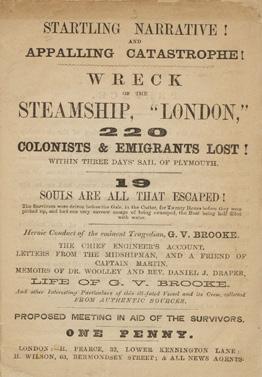
The voyage began on December 13, 1865, when the ship left Gravesend bound for Melbourne under Capt Martin, an experienced Australian seafarer.
A story published after the loss claimed that when the ship was enroute down the Thames, a seaman seeing her pass Purfleet said: “It’ll be
her last voyage… she’s too low down in the water, she’ll never rise to a stiff sea.” His prediction proved all too prescient.
After bad weather had delayed leav ing Plymouth, on the third day out, while crossing the Bay of Biscay in a gale and heavy seas, the cargo shifted and her scuppers choked, forcing the vessel lower in the water where she was swept by tremendous seas.
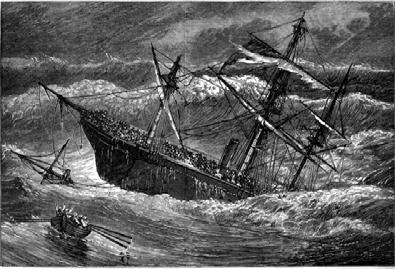
Water poured down through the cargo hatches extinguishing her fires. Capt Martin decided to return toward Plymouth, but in doing so, headed back into the eye of a storm.
On January 11, a huge wave
crashed on to the deck, smashing the engine hatch, which resulted in water entering the engine room, putting the engine fires out. By January 12, her deck was nearly level with the huge seas and the decision was made to abandon ship.
The lifeboats were swamped as soon as they were launched, with only one staying afloat. Nineteen people escaped on that lifeboat, only three of whom were passengers. They were picked up the next day by the barque “Marianople” and landed at Falmouth.
The subsequent British Board of Trade inquiry found three reasons for the loss of the London: first, the decision by Capt Martin to return to Plymouth, thereby re-entering the worst of the storm; second, the ship was overloaded with 345 tons of railway iron; and third, the 50 tons of coal stored above deck blocked the scupper holes and prevented drainage of the waves sweeping the decks.
This disaster, among others, led to the eventual introduction of the Plimsoll line to stop owners from overloading their vessels.
The memorial tablet recording the death of young Arthur Angel and his fellow travellers was a grim reminder of the hazards of sea travel to Australia in the 19th century.



Our Hostel will enable you to enjoy a relaxed and caring community environment with 24hr care. Located within a beautiful garden setting in Page, Villaggio Sant’Antonio offers safe and secure living in both our Aged Care Facility and our Independent Living Retirement Villas.


For all enquires please contact us on 62551794 or reception@villaggio.com.au
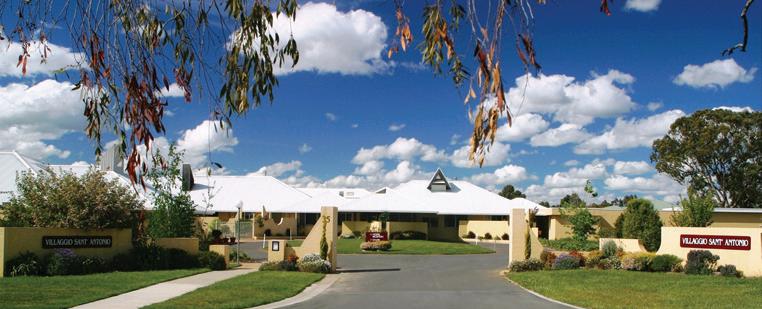

A key and mostly undervalued part of the process of getting spectacles that work correctly is having a good optical dispenser to help you choose the right options for your needs.
My colleague Ross Collins, at Evolve Optometry in Gungahlin, has extensive experience and will assist you with the optical dispensing aspect of your decisions.

Before you even have your eyes checked, Ross has put time and thought into the frame selection, trying to ensure there is a broad range of options, and only having frames from suppliers that he is confident of the quality.
There may not be a brand you are familiar with, but you can’t be sure of the quality of a brand just because it has a well-known name.
Once you have had your eye exam and your prescription is established, Ross will then guide you in choosing a frame that not only fits well, and looks the way you want it to, but that will work well with the lenses you require.

Part of that process is working out what lens design, material and coatings suit your needs best. We will ask you about what you want your spectacles to do in order to make the best suggestions.

The process is not a one-way exchange where we tell you what you will have, but a discussion where we are trying to ensure your spectacles are ideal for your needs.
At Collins and Lonergan we have carefully selected our frame range to cover the needs of the widest variety of shapes and styles.
We have some well-known brands, but also some less prominent brands that offer different style options while maintaining good quality. The quality of the frame’s construction and materials is something you can only really notice when you physically try them on, or pick them up and feel them in store. Why not pay us a visit and check out the range and talk to Ross about your needs.
Collins and Lonergan Evolve Optometry is an independently owned Optometrist in the centre of Gungahlin. We are conveniently located opposite Coles inside Gungahlin Village.
Call us on 6189 5891 or visit our website at evolveoptometry.com.au to book an appointment.

A mental health drop-in service for people to receive community support when needed was opened in Belconnen. Additionally, the Greens achieved additional funding of $18 million for the homelessness services sector. For Abo riginal and Torres Strait Islanders there is now a dedicated support for someone considering suicide or has attempted suicide, and in the community support following a suicide.
Working with Labor in government, action on homelessness included the extension of vital services such as the Early Morning Centre to open seven days a week and the Winter Lodge to a yearround service now called Ainslie Lodge.
phase out fossil gas use by 2045 through the ACT’s “Pathway to Electrification”. This commences with a regulation to prevent new gas connections from next year. Running parallel is the effort to reform the wood-fired heaters replace ment scheme so that households can be encouraged to transition away from these devices. Low-income households are specifically supported.
Somewhat more controversial, but not unexpected of the Greens, is the plan to
Next week’s Mid-term Review looks at the achievements of the Canberra Liberals.

Michael Moore is a former member of the ACT Legislative Assembly and has been a political columnist with “CityNews” since 2006.

RE global heating caused by fossil fuels from Dr Douglas Mackenzie (Letters, CN September 22).

There are a lot of differing opinions on the subject. Douglas finishes his letter by saying: “Any intelligent reader should now be convinced that global heating and climate change are caused by our use of fossil fuels”. I am not going to enter into the debate on the cause of global warming. What I would say is, without fossil fuels, the world would be in a sorry state, and without fossil fuels we would go backwards, and I am not talking about burning coal or gas causing pollution.
What I am talking about, is all the things that we take for granted in this world. All forms of plastic and most forms of resin are made from fossil fuels. If we do not use fossil fuels, we would have no phones (mobile or otherwise), computers, radios, TVs, videos, plastic furniture, vinyls, synthetic fabrics, pens, cameras, power points and light fittings in the home etcetera.
The wind turbine blades are made from fibreglass that is bound together with resin, which is quite often made from fossil fuels. I could go on but the list is endless.
Without fossil fuels we would not have the steel products we have today such as cars, factory machines, girders to build buildings, ships, planes, trains, buses, railway lines, bricks to build homes and so on.
Steel is made in blast furnaces and as yet we do not have sufficient supply of electricity to come even close to creating the heat needed to make steel.
To coin the phrase from Douglas: “Any intelligent reader should now be convinced that” without fossil fuels we would have none of the above.
Vi Evans via email
I FEEL it necessary to respond to Ray Peck’s letter (CN September 22) commenting on my letter where I addressed the misinformation from Ken Murtagh on human-induced climate change.
I have been engaged in the study of weather and climate for over 50 years, the last 30 years here in Can berra. I think I made it very clear that I completely agree with the findings of almost all reputable climatologists, that humankind is largely responsible for the observed rise in atmospheric and ocean temperatures thanks to continued human-produced emissions of greenhouse gases into the atmosphere.
I have read numerous reports from the World Meteorological Organization, NOAA, NASA , the British Met Office, our BOM and the CSIRO.
All confirm my concerns and, certainly, here in the Canberra region, the trends are very obvious, particu larly when examined against the longer records of some meteorological sites predating the establishment of the Canberra Airport site in 1939.
In summary, summer temperatures are becom
ing hotter over the past three decades with more heatwaves. The current cool spell due to “La Nina” is a notable but temporary exception.
Winters are milder with a noticeable reduction in frosts and almost no new minimum temperature records set for several decades. Summers are becom ing wetter, with more intense rainfall events from thunderstorms, while winter, nominally our wettest season, is becoming notably drier.
Overall, yearly rainfall in the Canberra region is decreasing in trend terms. These developments will have significant implications for the rural community surrounding our city. For the urban dwellers, the risk of another 2003 bushfire emergency, not to mention the more recent catastrophic event, are more likely to occur as decreased rainfall and droughts intensify with vegetation drying warmer temperatures.
I am not an engineer, economist or medical specialist but I am certain that the reliability or cost of renewables far outpaces the unviable use of non-renewable resources.
Gavin O’Brien, GilmoreJOHN Smith (Letters, CN October 6) makes several important mistakes in his put-down of renewables and praise of nuclear energy.
To give him the benefit of the doubt, the word
“protracted” (projected?) was perhaps the work of autocorrect, but the average “capacity” (output) of a wind turbine is three megawatts, not five.
Mr Smith is also wrong about China’s efforts on renewable energy. China is by far the world’s largest producer of both wind and solar energy.
Yes, its population is concentrated “in the east (actu ally, the south-east) of the country”, but not all “wind turbines and solar farms are in the west”.
In fact, two of the three largest concentrations of wind turbines are in the south-east (Guangdong) and the north-east (Liaoning).
China’s longer-term plan is that almost all available surfaces will be covered by solar panels, with large pro jects in desert areas and smaller projects on rooftops.
China currently has no plans for “nuclear-powered electricity”.
Dr Douglas Mackenzie, DeakinI HAVE held a driving licence unblemished from an offence for 72 years – including driving on three continents.
Given the shocking road crashes (not accidents) happening weekly by L and P-plate drivers, I believe they reflect dangerous sub-standard driving abilities and should no longer be allowed.
Colliss Parrett, BartonEvery republic I know of has won its freedom through some war or battle, some overthrow of a despot, military regime or overbearing colonial power.
Furthermore, when they call themselves the People’s Democratic Socialist Republic you are sure to find they do not belong to the people, they are not democratic and neither are they Socialist.
The more adjectives they use the less free the people are. Think of the military, autocratic or Communist regimes, and of all the minority group persecutions in countries that call themselves republics.
Aborigines never declared war against Britain and Australia has never had to fight for its freedom. We were blessed with a colonial power that initially only wanted to park some of its convicts and over time realised that we were bigger and better than a mere faraway island jail.
Freedom came easily to the ensuing colonies, which were almost an offshoot of Britain itself. Through the 1880s trade with Britain was so strong that about 70 per cent of imports came from Britain, which in turn took around 80 per cent of our exports and our pound had parity with sterling. We had no central bank so Austral ian banks placed money into “London Funds” until such time as the Commonwealth Bank was established as a central bank, superseded by the formation of the Reserve Bank of Australia in 1960.
While the High Court was established in 1903, appeals could be referred to London’s Privy Council and it was not until 1986 that our legal system broke its ties with Britain.
However, the world was quickly changing; Britain aligned itself to Europe and Australia absorbed many migrants, many from damaged regimes, bringing diverse religions and beliefs, and there is a call for our head of state to be Australian. In essence this is symbolic as our governors-general have all been Australian since 1965.
However, in 1999 there was a failed referendum calling for Australia to become a republic and to change the constitution to allow for a president to be appointed by both houses of parliament.
We have probably the most robust constitution in the world and reserve powers are granted to the Governor-General in case parliament does not uphold the constitution.
Why should we even contemplate suffering the same collective noun as such repugnant regimes as North Korea, Syria, Turkmenistan, Equatorial Guinea, Yemen or Somalia when we already have a much more appropriate and dignified name? The Commonwealth of Australia.



With the passing of the Queen, unashamed monarchist RICK FORSTER can’t grasp why Australia would ever need to become a republic.Cartoon: Paul Dorin
MAINTAINING health
or going on a journey towards good health means different things to different people. Whether it’s quality physiotherapy, rewarding exercise or effective treatment of conditions such as arthritis and chronic pain, Canberra is home to many experts passionate about improving health in all sorts of ways. This week “CityNews” speaks with local allied health experts, surgeons and medicinal practitioners who specialise in maintaining people’s wellbeing.
for long periods don’t have as successful outcomes as those who seek help earlier.”
Dr Vass says patients have the certainty that they’ll be seeing him when they visit the clinic and that he will provide one-onone, tailored care and advice.

“It’s rewarding to help people not be so isolated, and help improve their communication with others, especially their loved ones,” he says.
Dr Vass Hearing Clinic, suite 14, John James Medical Centre, 175 Strickland Crescent, Deakin. Visit drvasshearing.com.au or call 6282 2717.




Nimmityjah AHCS
service operated by the Aboriginal community of the ACT.
Wiradjuri language, Winnunga Nimmityjah means Strong Health.
primary health
service logo is the Corroboree Frog which is significant to Aboriginal people in the ACT.

aim is to provide a culturally safe, holistic health care service for the Aboriginal and Torres Strait Islander people of the ACT and surrounding regions. The holistic health care provided by Winnunga AHCS includes not only medical care, but a range of programs to promote good health and healthy lifestyles.

services include:

ARTHRITIS ACT will celebrate World Arthritis Day (October 12) and World Osteoporosis Day (October 20), says CEO Rebecca Davey.
“These days are created to remind us of the impact of both conditions on our communities,” she says.
“At Arthritis, Pain Support and ME/CFS ACT, we can assist with managing the pain of both arthritis and osteoporosis, as well as providing a suite of programs that can help people manage these conditions.”
Rebecca says there are more than 100 types of arthritis, and it can affect people in many ways, and at any age.
“From being a niggly knee or finger that plays up when it rains, to leaving people completely bed bound on drugs that mimic their immune system, and lifelong severe disability,” she says.
“It’s not ‘just arthritis’, it is a condition that you should always seek medical advice for.”
Osteoporosis is a condition where the bones become thin, weak and fragile, says Rebecca.
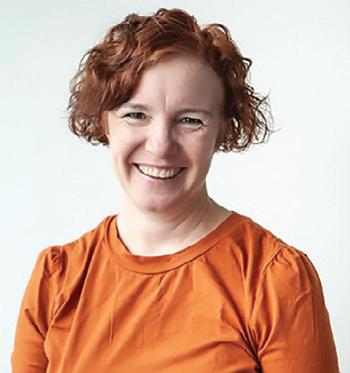

a condition of ageing, it can affect people at any age, and can be the result of treatment for cancer, other conditions, or the result of other diseases,” she says.
“One of the biggest risks of osteoporosis is broken bones and pharmaceutical treatment for the condition is usually considered essential, as well as strength and balance exercise.
Arthritis ACT, Pain Support & ME/CFS ACT, 170 Haydon Drive, Bruce. Call 1800 011041 or visit arthritisact.org.au
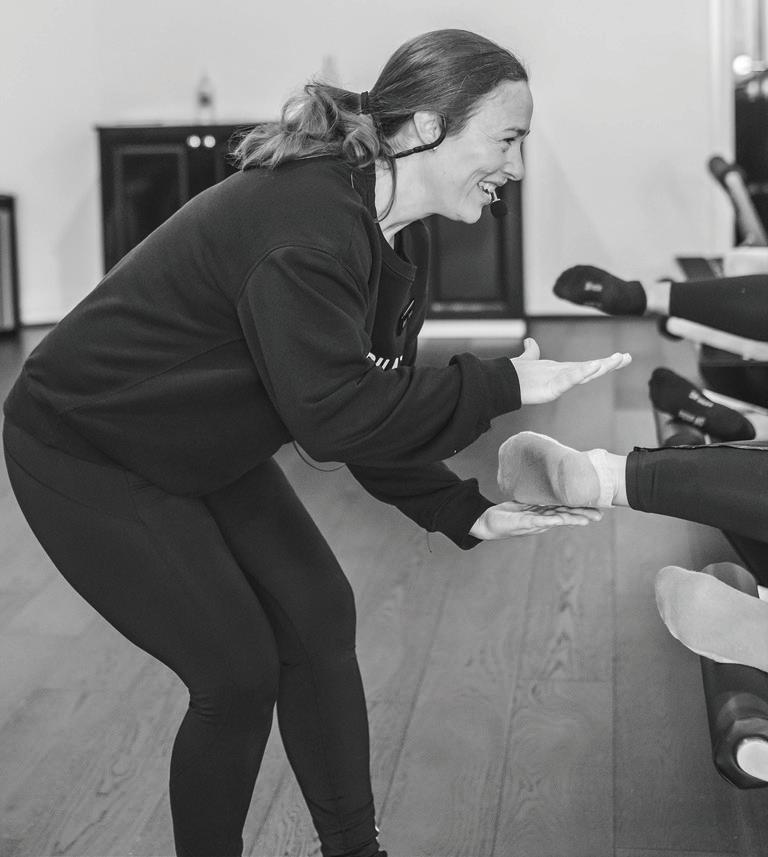
SOUTH Pacific Hemp, Canberra’s first all hemp store, celebrates the time-tested health benefits of hemp and its multiple uses, says store manager Sue Booth.
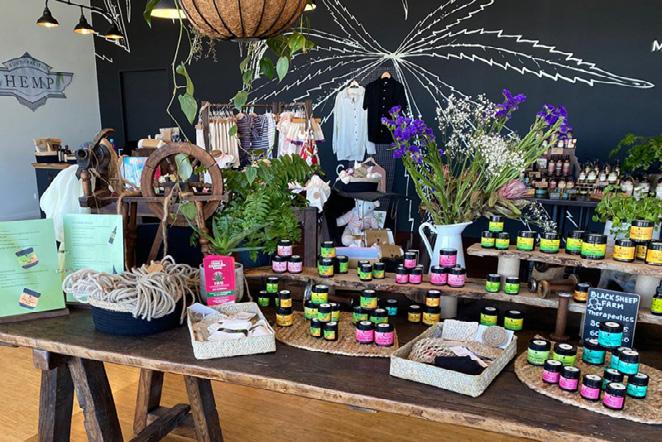

“It’s time we moved away from hemp’s old reputa tion – while hemp and marijuana both come from the cannabis plant and often get confused, hemp is most definitely not something that can get you high,” she says.
“Hemp has strength, medicinal and nutritional value, and was first cultivated more than 10,000 years ago.”
With a selection of products that includes unique health foods, proteins, hemp seed oils, balms and skin creams, babycare and more, Sue says there’s plenty to find.
She also says the store has a range of clothing and linen, fabrics, bedding and cushions all made to promote wellbeing.
“Hemp protects your skin by naturally filtering UV light. It also resists bacterial growth and breathes excellently, preventing odors and has four times the strength of cotton and it won’t weaken when washed,” she says.
“Hemp gives years of wear while its breathing ability, antibacterial and antiviral properties help promote good sleep.”
South Pacific Hemp, 84 Wollongong Street, Fyshwick. Call 0431 318898 or visit southpacifichemp.com.au
Sciatica is caused by nerve pain that originates from the lower back and can cause pain from the point, right down through your bottom and down one leg to your calf.
Not the entire area may be causing you pain at any one time, but what the pain will certainly do is cause you frequent extreme discomfort that is often not relieved by pain medication.
Exercise is a key to dealing with sciatica. People who have lived with sciatica for some time will generally have some weakness of the
muscles, tendons and ligaments surrounding the joints and bones that support the sciatic nerve. This is largely due to not having used their body to the fullest extent due to the sciatic pain.
Sciatic pain will generally respond well to rebuilding the support structures surrounding the sciatic nerve. For some people surgery may be the only solution, but in most cases, even if surgery is required, building up the support structures either prior to or following surgery will still be necessary.

Arthritis ACT has a team of exercise physiologists that can improve your quality of life in relation to your sciatica. Both hydrotherapy and land based exercise techniques are useful, and for those who do not like water exercise, land based exercise is just as effective.


Call us today on 1800 011 041 and book your appointment with one of our exercise physiologists and scientists to solve your sciatica.



You do not need to have any particular condition to utilise our services, just a desire to ‘Build a Better You.’

HIGHER Function offers a range of classes that are taught by experienced physiotherapists and exercise physiologists, using evidence-based exercises, says physiotherapist Andrea Rich.


“Strong Bones is a group class designed specifically for people with osteoporosis and osteopenia (low bone density),” she says.

“This class focuses on exercises to safely improve bone density – stomping, holding weights – and incorporates strength training, mobility and balance exercises to improve overall mobility and prevent falls.
“Strength For Life is a class for people over the age of 50 in which you receive your own personalised strength and exercise program and are working towards your own individual goals.
“Golf Fit is great for those who want to play longer
games of golf without pain, prevent injuries and improve mobility, strength, power and speed.”
Andrea says people come to class to work hard, get stronger and reduce their pain, but the atmosphere is still fun and friendly.
“Lots of people have become friends and go for a well-earned coffee after classes,” she says.
“Our small group classes allow for everyone to receive attention from the therapist, ensuring they are performing exercises correctly, safely and can offer modifications where needed.”
“We have a 90-year-old client who attends three classes a week. We have lots of fun but are still working hard.”




Higher Function Physio & Pilates, Suite 4, Level 1/23 Petrie Plaza. Call 6262 9664 or visit higherfunction.com.au






ORTHOPAEDICS ACT was established in 2013, and provides a complete range of care for patients with orthopaedic conditions.
Associate Professor Chris Rob erts says they are the largest and most comprehensive orthopaedic practice in Canberra.



The goal at Orthopaedics ACT is to treat patients with musculo skeletal disorders, strive to reduce pain, and improve their patient’s function and quality of life.

Chris Roberts says this may involve trauma and fractures, sporting injuries, high-speed motor vehicle accidents, overuse injuries, arthritis and disabling pain.
“There is nothing more satisfy ing than hearing from our patients that there has been a reduction in their pain or that they are pain free and able to get back to activity without restrictions,” he says.
“At Orthopaedics ACT we have all devoted ourselves to caring for our patients and striving to be the best in our field.”
Orthopaedics ACT, Woden Specialist Medical Centre, level 2, 90 Corinna Street, Phillip. Call 6221 9320 or visit orthoact.com.au Orthopaedics ACT associate professor Chris Roberts.




BROAD beans are still in flower at the moment and, once the weather warms, the pods will grow fast and are best picked when young.
I have tried crimson flowers and normal Coles dwarf broad beans this year and have had remarkable success with moist soils over winter. I have not had to water them.

Once they finish, I will remove the whole plant, put it in the compost and plant leafy greens in those spots because broad beans add nitrogen to the soil. Collect the seed and keep it in a paper bag for sowing next year.
In fact, all herbs and seedlings can go into the garden (with a bit of protection from frosts) right now to get a good start to having produce on the table by early summer.

APPLE trees will be coming into flower as well as pears and other pome fruits. It’s a valuable time to keep water up to all fruiting trees. Once the flowers begin to wilt, netting apple trees is paramount to prevent codling moth entering the fruit to lay eggs.
Codling moths appear once the temperature goes over 15C and netting trees will need to be done before they get active.


THERE are many ways to grow fruit trees in a small space. Perfect for covering a wall in the garden, espaliering works well with fruit trees such as apples.

The old agricultural practice of controlling woody plants for the production of fruit has many styles to choose from with popular designs
such as cordon, candelabra or fan shaped. When pruned correctly, it can be a statement in the garden.
CITRUS trees can go in the ground now. They need a lot of food and a specific citrus fertiliser will help with increased flowering and in turn increase fruit yield.
If buying a lemon tree look out for Meyer, which is cold hardy and can cope with more exposure to the elements than Eureka or Lisbon.
Meyer lemons are generally smaller and a little sweet. They can be used raw in salads.
Eureka is an almost thornless tree with large seedless fruit with a sharp taste. Lemon trees like slightly acid soil, a pH of around 4-5 and good drainage.

Continue to spray the bark of citrus trees with a horticultural oil to keep any scale or bronze orange bugs at bay. Remove any branches that are low to the ground and raise the bottom (skirt) of the tree.

Prune out any crossing-over branches and feed and water well in the next few months as the flowers will form for next year’s fruit.
NOW’S the time to get busy with summer flowers by planting dahlia tubers and gladiolus corms. In fact, any other summer-flowering plants can go in now and frost-tender annuals, such as asters, zinnias and nasturtiums, can be
started as well.

Most spring and winter-flowering bulbs have died down and the leaves can either be chopped or tied up to die down completely. As the bulbs are going into dormancy, it’s a good time to fertilise them to put energy into next year’s flowers.
The whole garden can benefit from fertiliser this month and different fertilisers are suitable for growing different plants. Lawns could do with a fertiliser that is high in nitrogen and does not need flower food, whereas flowering plants need more potassium than nitrogen.
GRASS, turf or lawn all need the most maintenance now, keeping an eye out for bindi weeds, which need to be pulled before the seed dries in summer.



Flick weed, flat weed or anything that should not be there needs to be removed. A trowel and 10 minutes every few days will make a big difference in summer to the look and feel of the lawn. A light application of an all-purpose lawn feed will green things up for summer.
jackwar@home. netspeed.com.au

“FIFTY years of comedy talent in one night only” is the promise of the “ANU Law Revue”, soon to take the stage at The Playhouse.
I can hardly wait. Ever since I saw a bunch of law students strip off and throw their “briefs” at the audience, it’s been a favourite night out, always top heavy with talent and wit.

The 50th anniversary celebrations have been going on since late September, when ANU fresher law students performed their 2022 revue, “Pingu Goes to Law School: Moot Moot”, to packed houses at Canberra Rep Theatre.


You can fairly bet the tickets will go like hotcakes for the bigger show, where new and old performers will relive content from across the 50 years, but the crew are display ing a fair bit of chutzpah when they say: “Come see the show that humbly submits to the court that it is number one across revues nationwide.”
I caught up with final-year international relations student Laura Johnston who, with law student and president of the ANU’s Italian Society Margherita Dall’Occo-Vaccaro, is directing the show.
“We think the first ‘Law Revue’ was in 1972,” Johnston says, explaining that the performance at The Playhouse will feature “six-ish” sketches from each decade and a reimagined sketch from 1972, played by the 2022 cohort of newbies surrounded by “Law Revue” alumni.
Most sketches have been sourced from past law revues but it wasn’t easy, for as Johnston and Dall’Occo-Vaccaro embarked on the progress, she says: “Our brains fried... we started this process, but we found it insane.”
Not to worry. After a cry for help, two bril liant former law students and revue alumni stepped in as researchers and scriptwriters.
ANU law and international relations student Isabelle Lee, who moonlights as a prizewinning hip-hop dancer, and China


expert Bolwen Fu, sourced the old skits, ad justed them where needed, then structured the whole revue into a tight 90-minute script which, when I speak to Johnston, is ready to be ticked off for production.
“We couldn’t have done it without them,” Johnston says.


So, what’s on the schedule for The Playhouse?

“For the opening number, we are trying to subvert what happens in a revue,” she says.
“We are doing a Gregorian Chant full of fake Latin legal terms, then finishing off with Bon Jovi’s ‘It’s my life’.”
One of the nostalgic items will be an original singing-playing performance by “The Two Stephens” – two genuine former law profes sors who were a comedy duo in the ‘80s.

Their identities? Stephen Bottomley, former dean and ANU emeritus professor in ANU commercial law and Stephen Parker, former vice-chancellor of the University of Canberra and guitarist in the UC band, The Hip Replacements.
Of course, the “Law Revue”, just like any uni revue, is largely comprised of spoofs, so they found a sendup of The Wiggles from 2011, which they had to change a bit to move with the times, but which is still very funny.
A specifically legal skit is “Legal Lawyers at Law 2 – This Time it’s Litigious”, and the show will also feature a sketch from their annual Christmas charity show, “The Christmas Revue”, to show people how the “Law Revue” has branched out.
By popular demand, the showstopper will be an “anti-joke” skit called “Dog”. That’s where the joke-teller is delivering something that’s intentionally not funny, relying on the baffled reaction from audiences. This involves the entire cast and it certainly doesn’t have a punchline. That would spoil the anti-joke.
Because the revue aims at bringing back the past, they have been busy sourcing genuine authentic costumes kept at home in the closet by former revue performers.

“It’s really cool what costumes have been kept, and I think it shows how much people have loved being in the revue,” Johnston says.
“ANU Law Revue”, The Playhouse, Thursday, October 20.

LOVED, admired and occasionally sniffed at, Canberra Repertory Society has been one of the focal points of Canberra culture since the 1930s and it’s no secret that it’s just turned 90.

So tight is its grip on the national capital that it has seen diplomats such as John Mc Carthy, Colin Willis and Britain’s Sir William Charters Patey treading the boards and has numbered even a governor-general, Sir Paul Hasluck, in its membership.
Rain, hail and shine since September 1932, Rep has staged “Reppy” English comedies, thrillers and serious plays, even throughout covid.
Many are the theories about Rep’s longevity, so to canvas them I caught up with Evol McLeod, who was manager at Rep 1986-1993, and Stephen Pike, business manager 1999-2004, to get the long view.
Both managers were famous in their time for having achieved that elusive theatrical El Dorado, bums on seats, with each achieving upwards of 80 per cent capacity regularly and 98 per cent for separate productions of Goulburn director John Spicer’s stage version of “Pride and Prejudice”. Old Time Music Hall also attracted punters in droves.
To McLeod, the high point of her time at Rep was the late, enigmatic Ralph Wilson’s Classical Theatre Ensemble which, she says, brought in an intellectual frisson and new,
educated audiences keen to see the greatest classics of western theatre.

the doldrums, won a case of beer from set designer Russell Brown, who bet he couldn’t raise the numbers to 60 per cent.

McLeod believes Rep occupies a unique place in Australia for its high-quality amateur theatre, while Pike, agreeing, says its survival rests on the consistency of its production standards and, even more, on its social cohesion, with people joining the society and becoming friends for life.
This was possibly the key to success during difficult times when companies often found it hard to attract audiences of even 20 or 30.
about Rep – is it professional or amateur?
In reality, Rep has always been proudly amateur, a society of theatre lovers who once voted down a proposal to go professional.
But its relationship to professional thea tre is symbiotic and even today, talented figures behind Canberra’s independent theatre companies such as Jarrad West, Jordan Best and Lexi Sexuless have all cut their teeth in Rep.
As well, as McLeod says, the society has long acted as a seeding ground, almost a school for professionals, as generations of Rep alumni have gone on to professional
careers interstate.
Earlier directors such as George Ogilvie got their start at Rep, actor-director Ed Whiteman went to the London Academy of Music and Dramatic Art armed with Rep’s Theatre Players Scholarship and comedian Dave Callan started out playing straight roles with Rep before launching a career based on his day job with ASIO.
But questions always lingered.
The late Walter Learning came to Canberra in the ‘60s to do a PhD, was seduced into Rep and later went on to become director of the Canada Council, but came back to Rep regularly, often to stage the annual Christmas farce.
Learning once told me of his near-disbe lief that Canberra, a decent-sized city, still didn’t have a professional theatre company, privately blaming Rep, with its ready supply of talented senior public servants who could easily get time off to rehearse. How could a professional theatre company possibly compete?
This has led to a love-hate relationship between Rep and local professionals, exacerbated by the fact that, as Pike and McLeod attest, standards at Rep have been high, leading to confusion about what “professional” means.
Rep’s rapport with the general public is built on years of engagement with Canber rans from well before the Canberra Theatre was built, when Rep was the only source of mainstage theatre.
I caught up by phone with actor Peter Rowley, who joined Rep in 1957 after school,
leaving Cowra for a job in the then Depart ment of Works. It was his making.
Rowley won a place at NIDA in 1962 and went on to become one of the country’s best-known classical comedy actors, but says he found it remarkable at the time that Rep, though amateur, engaged professional director-managers like Alan Harvey, then later Peter Batey, Ross McGregor and many others.

Rep, Pike and McLeod continued to contract professional directors with respectable fees, although some, such as Rep member-director Corille Fraser, declined to be paid.
One such director, Aarne Neeme, tells me from Singapore that he has done more than a dozen productions with Rep over 40 years.
“It has always felt like being a part of a cosy family business, with talented actors, crew, support staff and a warmly receptive audience,” Neeme says.
Back in 1932, Rep went independent because of a spat about a costuming item, giving the title to Anne Edgeworth’s history of Canberra Rep from 1932 to 1982 titled, “The Cost of Jazz Garters”.
Now in 2022, the company is in good shape, rejoices in a membership of 125 hands-on volunteers, and has a production of “Sense and Sensibility” coming up – the very kind of English play on which much of its history has been built.


Who can doubt that it will continue to flourish for another 90 years?
Canberra Rep’s 90th birthday dinner is at the Canberra CIT, Reid, 6pm, October 20.

WATCHED by almost 200 million people in its first week alone, Netflix’s new show on infamous serial killer Jeffrey Dahmer is yet another true-crime streaming phenomenon.
Hitting the platform’s number one most watched series in 60 countries, “Monster: The Jeffrey Dahmer Story”, recounts the life and crimes of the Milwaukee murderer who killed 17 men between 1978 and 1991.
Dahmer committed cannibalism and necrophilia among many other terrifying transgressions, crimes that have made him the subject of dozens of podcasts, documentaries, books and more since his death in 1994.
In this new series Netflix offers a dramatic
recreation of his life that is nothing short of a horror show. Perhaps unsurprisingly to some, it’s created by Ryan Murphy, who is also behind the fictional TV hair-raiser “American Horror Story” (on Binge).


If there’s one reason to watch “Dahmer”, star Evan Peters is it.
Peters is nauseating in his performance of the killer, and that’s a compliment. What other way is there to describe a quality performance of a real-life psychopath?
The supporting cast is also excellent.
Great cinematography and pacing on top gave this series everything it needed to become a true crime hit.
But while praise for the production value itself is justified, there’s something sinister about this show that goes beyond its subject matter.
In the weeks since its release, “Dahmer” has been the subject of a furore caused by Netflix neglecting to inform the families of real-life victims the series was happening.
The sister of one of these victims, Rita Isbell, whose brother Errol was killed by Dah
mer at just 19-years-old, has publicly scolded Netflix, telling “Insider” in an interview that it’s “harsh and careless”.
“I feel like Netflix should’ve asked if we mind or how we felt about making it. They didn’t ask me anything,” she said.
“When I saw some of the show, it bothered me, especially when I saw myself – when I saw my name come across the screen and this lady saying verbatim exactly what I said.”
In a tweet, Errol’s cousin, Eric, also described the family’s disgust with the production.
“I’m not telling anyone what to watch, I know true crime media is huge [right now], but if you’re actually curious about the victims, my family (the Isbells) are pissed about this show. It’s retraumatising over and over again, and for what? How many movies/ shows/documentaries do we need?”
It’s a question that may just need to be asked, especially as the genre continues to increase in both popularity and accessibility.
Many will be familiar with similar contro versy which surrounded 2019’s “Extremely Wicked, Shockingly Evil and Vile”, a film that
THE opening titles for David O Russell’s somewhat large (134 minutes) film claims that “a lot of this really happened”. “A lot” is relative.
“Amsterdam” starts with World War I, a nasty introduction to a new kind of warfare. In that war, and in its successor that is about to kick off when it ends, US troops arrived late. After battlefield and military hospital sequences, the story proper begins in Amsterdam where Burt (Christian Bale), a doctor with a glass eye and a soft spot for fellow veterans; his regimental companion, soldier Harold (John David Washington) and Valerie (Margot Robbie), a nurse with a talent for making small sculptures from shrapnel, leave recuperation and start going about family stuff and doing good.
The film’s ultimate dramatic element develops through a plot to overthrow the US government and install a dictator willing to embrace fascist ideals –apparently, this did actually happen.
The film takes its time getting around to it, exercising our patience, or perhaps our endurance, for an hour in which the principal characters develop their friendship before getting to the story it really intends to tell.
With a tighter script, “Amsterdam” could have spent less time telling about the principal trio’s meandering through superfluous commentary about how they spent the interbellum period.
Be patient. Playing a no-nonsense retired general, Robert De Niro energises the film sufficiently to enable writer/director Russell to wind it up before World War II kicked off – as history now tells us, more than two years before Uncle Sam got into it.
At all cinemas
THIS is a curate’s egg sort of a movie – some parts good, others less so.
In the Arizona desert town of Victory, a few couples live on a one-road, pastel-coloured cul-de-sac, visually the sort of ‘50s Americana that sells the promise of the American Dream, with perfectly manicured lawns, doting wives, and hard-working husbands.

The darling of the title is housewife Alice (Florence
Pugh in a great portrayal) who maintains a clean home, always puts dinner on the table and adores her equally adoring husband Jack whose first thing on getting home from work is to pleasure her with a quick 34½ (ie her half of 69).

Alice’s neighbour Margaret (KiKi Layne) is convinced Victory husbands are keeping something from their wives, but when Alice starts asking questions, Victory’s facade begins to come undone.
Frank (Chris Pine) leads the town’s men, perfecting the top secret “Victory Project”, which he believes will change the course of history. His progressive thinking dominates the town with mind-control propaganda and an absence of free will.
Director Olivia Wilde and screenwriter Katie Silber man work hard to vigorise a story by Carey and Shane Van Dyke. Alice’s internal psychosis manifests itself in striking visions, rumbling sound design and percussive score, featuring women in distress.
Jack (boy-band-star Harry Styles) delivers under-developed acting skills and gets to sing (about potatoes) and dance a delirious tap dance that looks and feels a tad out of place.
Some of the film’s 123 minutes might have been bypassed without detracting from the drama. Others are plain ill-conceived for reasons that director Wilde (who also plays a supporting role in the Victory community) must bear responsibility.
And whatever Victory’s men are working on begins and remains an unexplained mystery, which makes the screenplay’s impact a tad less than robust.
At all cinemas
starred “High School Musical” heartthrob Zac Efron as Ted Bundy and which was widely accused of fetishising the serial killer.

Closer to home, anger has also been recently sparked by “Nitram”, a movie that tells the story of Martin Bryant and the events that led up to the tragic 1996 Port Arthur massacre (On Stan).
Streaming companies are no stranger to this sort of criticism. Netflix has also copped serious heat for putting “Dahmer” under the platform’s “LGBTQ+” category, a tag dedicated to representing the community.
That label was placed next to other tags such as “horror”, “ominous” and “vintage crime”.
While Dahmer was indeed homosexual, many people of the community have lam basted the streaming giant, saying that this is not the representation they’re looking for.
Netflix changed the tag after two days of backlash.
Many of the show’s critics have also described it as “humanising” the killer through a portrayal of his upbringing that

places him as a victim of bullying, a broken home and crippling loneliness.
Personally, I found the series’ use of its chronology meant it never was able to engender much sympathy for its lead.
The first episode is set at the very end of Dahmer’s reign of terror, portraying the crime that saw him finally caught.
In doing this, the audience sees the killer at his absolute worst, the height of his murderous endeavours. It’s only after this lengthy and terrifying prologue the series then rewinds back to Dahmer growing up and his troubled life. Whenever something bad happens to him, it’s always grossly tinged by the monster we know he becomes.
Still, is all of this going too far?
The landing of “Dahmer’’ on Netflix and its gigantic viewership makes it a question worth asking.
It’s an intriguing thought that all of the controversy will ultimately serve to bring more viewers to a series that is eerily similar to its star attraction – creepy, exploitative and frighteningly hard to look away from.
 By Wendy JOHNSON
By Wendy JOHNSON

IT was a delicious surprise to stumble across Kopiku Café, a family-run operation in the Sargood Street shopping section, O’Connor.
This small, unassuming café serves a wide range of dishes, but the star section of the menu focuses on authentic and well-priced Indo nesian. It’s fabulous.
We were in the area, were intrigued and walked out very happy having shared two main Indonesian specialties.

The eight-item Indonesian line-up of dishes included the Ayam Rendang, an absolute cracker, which we tucked into with gusto ($18). Two massive chicken legs, braised in curry, were served with fried potatoes, tomatoes and a boiled egg, which feature in so many Indonesian dishes.

It was packed with flavour and beautifully spicy. The chicken was super tender, and we mopped up
the gravy with spoonfuls of fluffy white rice. We were silent as we ate, concentrating on the winning tastes.
Our second main was the Soto Tangkar ($20), a slow-cooked beef stew with rich spices. It, too, was served with tomatoes and a boiled egg. We were expecting a thick stew but weren’t disappointed with the “soupier” version. The beef was finely shredded, and the “soup” chalked full of flavour.
Kopiku’s Indonesian dishes

also include Nasi Goreng and Mee Goreng ($18), the Lontong Sayur, a light curry soup with long beans, tempeh (fermented soybeans) and tahu (fried tofu) for $17. Also entic ing is the Babi Kecap, slow-cooked pork belly ($20).
Kopiku – beyond Indonesian cuisine – is a great all-rounder café and has a well-earned reputation for its extensive brekkie menu.
Items range from basic toast and banana bread through to heartier fare. The Kopiku roti, drizzled with
creamy, rich condensed milk, sounds exciting ($7.90).
For lunch, Kopiku caters for those who love burgers and those simply keen on a thoughtful sand wich or fresh salad. Kopiku also creates pizzas (saw a couple being served on the way out and they looked amazing). Customers can customise their own pizza (10-inch, $13). Select a base (garlic, tomato, pesto) and add as many toppings as desired ($2 to $4). Dishes for kids are all under $12.
Kopiku’s décor is basic with walls of a steel grey colour and bright orange plastic chairs placed around square wooden tables. A massive selection of desserts is displayed by the cash register. We were too full, but thought hard about a thick slice of salted caramel cheesecake ($6.90). Smaller sweets include friands ($5.40), Florentines ($5.90), croissants ($5.50) and a choc and orange slice ($7).
Drinks, beyond the full range of coffee and a decent selection of quality teas, include fresh juice, smoothies, milkshakes, thick shakes and ice drinks.

Kopiku Café is BYO. Dine indoors or in the small area out the front of the café.

 By Helen Musa
By Helen Musa
“WE must give the people what they want,” says Tempo Theatre director Jon Elphick, deep in rehearsals for Agatha Christie’s “Murder on the Nile”, coming up at Belconnen Community Theatre, October 21-29.
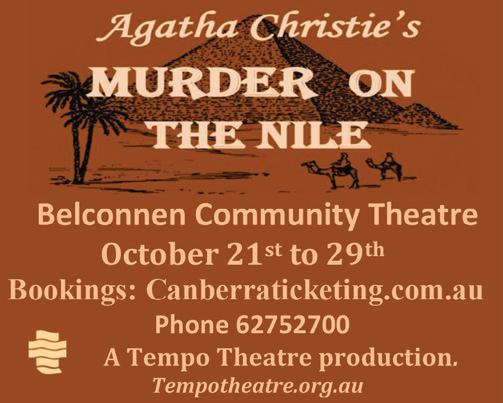
THE fledgling ANU Musical Theatre Collective is about to stage its second show, “Little Women: The Musical”, a reimagining by a cast of 17 of Louisa May Alcott’s famous novel in which the four March sisters explore life entering woman hood in America during the Civil War. Kambri ANU, October 19-22.
THE Stronger Than Fiction documentary series next takes a look at the psychological aftermath of China’s One-Child Policy. “All About My Sisters”
ARIES (Mar 21 – Apr 20)
Monday and Tuesday you’ll feel creative and motivated, as the Sun and Mars activate your Aries mojo. But there’s the potential for explosive Sun-Pluto power struggles mid-week (with an authority figure, work colleague or loved one). So calm down and try to communicate with extra care and diplomacy, otherwise you could overreact and do or say something you later regret! Strive to be uncharacter istically patient, as you make frustration your friend.
Mid-week looks eventful, as the Venus/Pluto square stirs up trouble. A double dose of diplomacy is required if you want to keep the peace. Then the focus is on friendships – how to nurture them, keep them… and then let them go if you have outgrown each other. You’ll find enjoyable mutual interests are essential to long-term platonic relationships. An old friend could also be the final piece of the puzzle as you follow the path to your true destiny.
GEMINI (May 22 – June 21)
Your wonderfully witty side could blossom, as you brainstorm ideas and amaze others with your quick-witted quips and clever comments. But – if you are too hasty – then you could put your foot firmly in your mouth. When it comes to a relationship issue, are you desperately trying to fix a frustrating situation? Prepare for some resistance from others (especially a friend or colleague). Quick fixes won’t work. You need to slow down and think things through.
CANCER (June 22 – July 23)
Pluto pushes your insecurity button, which could activate your protective Crab claws. But the more defensive you are (and the more resistant you are to change) the more exhausted you’ll feel and the more difficult the week will be. Try to get the balance right between maintaining the status quo (with things that are working) and changing the aspects of your life that aren’t functioning well. A close relationship certainly needs to be reviewed and renewed.
LEO (July 24 – Aug 23)
Mid-week, there’s a challenging connection between Pluto and the Sun. So try to avoid family squabbles, online arguments and run-ins with authority figures. If you are the person in charge, then resist the urge to be bossy and overbearing. Behav ing like a demanding Diva will get you nowhere fast! Try to be extra patient… which is not one of your natural virtues. For some lucky Leos, Venus blesses a community project or a joint venture on the weekend.
VIRGO (Aug 24 – Sept 23)
Don’t be deterred by challenges. Hard work and calm consultation will take you far! When it comes to work, a study project or a social media matter, you have the potential to achieve success, but it won’t come without plenty of elbow grease on your part. And avoid overreacting, Virgo! Criticising others (or blurting out the first thing that comes into your head) is a recipe for trouble. Saturn encourages you to bite your tongue, sit tight, and bide your time.
LIBRA (Sept 24 – Oct 23)
This week Venus (your power planet) trines Mars and pairs up with the Sun, which favours flirtatious encounters, romantic adventures and long-term friendships. But negotiations will be tricky, and possessiveness and jealousy could rear their ugly heads. So slap on a diplomatic smile and share the love around. As Libran birthday great Carrie Fisher observed: “Everything is negotiable. Whether or not the negotiation is easy is another thing.”
SCORPIO (Oct 24 – Nov 22)
The Sun and Venus are at odds with powerful Pluto (your patron planet) mid-week, which boosts your temperamental streak and your Scorpio control-freak tenden cies. And you could feel like you’re stuck in a self-sabotaging rut or even going backwards. You’ll find the more stubborn you are, the more challenging the week will be. Birthday great Tom Petty may sing “I won’t back down” but you need to keep your options open and try to be much more flexible.
SAGITTARIUS (Nov 23 – Dec 21)
Are your dreams achievable? Are you being unrealistic about a project that’s due to be completed? Perhaps you need to be more proactive, get others on board and learn to delegate? If you think creatively, work hard and capitalise on your group connections, then you’ll eventually taste success. Communication is emphasised, so expect plenty of phone calls, texts, tweets and emails. But avoid getting drawn into an argument about friends or finances.
CAPRICORN (Dec 22 – Jan 20)
With the Sun, Mercury and Venus all transiting through your career zone, it will be easier to sort out workplace problems than at other times. Especially if you articulate your thoughts and are prepared to compromise. A stressed colleague is hoping you can provide some astute advice and a helping hand. Single Capricorns – love and work are linked in dynamic ways. The weekend is good for mental focus, long-term planning and clever problem-solving.

AQUARIUS (Jan 21 – Feb 19)
Are you making the most of your quirky Aquarian mind? With the Sun, Mercury and Venus all visiting your philosophy zone, you have the ability to affect others deeply with your controversial ideas, expansive views and progressive values. Education, foreign travel, social media and local community connections are also favoured. But beware the tendency to self-sabotage. The only person who’s likely to undermine your efforts this week is you!
PISCES (Feb 20 – Mar 20)
This week emotions are murky and still waters run deep! With the Sun and Venus visiting your mystery zone (and squaring Pluto) there’s more to everything than meets the eye. And it will take your Piscean perception – and substantial detective skills – to uncover secrets and distinguish fact from fantasy. Resist the urge to be drawn into playing power games with others. Mid-week favours sharing secrets, family functions and romantic rendezvous.
are
is
“Affordable housing” or “housing affordability” – what’s the difference?

It’s getting a little embarrassing when those who should know interchangeably use these two phrases. Affordable housing is different to housing affordability. Housing is a basic human right according to the United Nations, not an optional extra. From the UN website (ohchr.org): “Housing is not merely a commodity, it’s a human right.
have
a species
is another
a more common
might
a





a level
term describes quickness
is a close-fitting
is the
a wading
“The human right to adequate housing means the right for all to a place to live in security, peace and dignity. The right to adequate housing is recognised under international human rights law in the 1948 Universal Declaration of Human Rights, in the 1966 International Covenant on Economic, Social and Cultural Rights and in many other human rights treaties, international declarations and conference outcome documents, including the 1996 Habitat Agenda.”
of
to the heron and
It is hopeful any future National Housing Strategy will include the 25,000-plus refugees coming to Australia, as it is simply impossible for ACT Housing or any other local authority to absorb them somehow. Some say it is a breach of a basic UN human right by not funding accommodation appropriately. Social housing options are finite and exhausted everywhere. But that’s another conversation for another time.
Data shows we have many in our Canberra community with affordable housing as a daily issue –from sleeping rough through to having difficulty each week making rental payments. For some it starts as getting a roof, any roof, over their head. Often, they have no fixed address and they are often “hidden” in a visible sense. Moving to semi-permanent accommodation on a per night basis is better than nothing.
In a progression sense, they will hopefully get a permanent address one day; then transition into rental accommodation at whatever address they’re given; and eventually might have the luxury of renting in a location and a price point of their choice one day. Many in the other half of our Canberra community are affluent enough to have housing affordability as their issue – buying something on the property ladder. The issue of housing affordability is real as it is a driver of our economy, and various government policy levers are being applied to assist home purchases, such as first home owner grants.
helps
